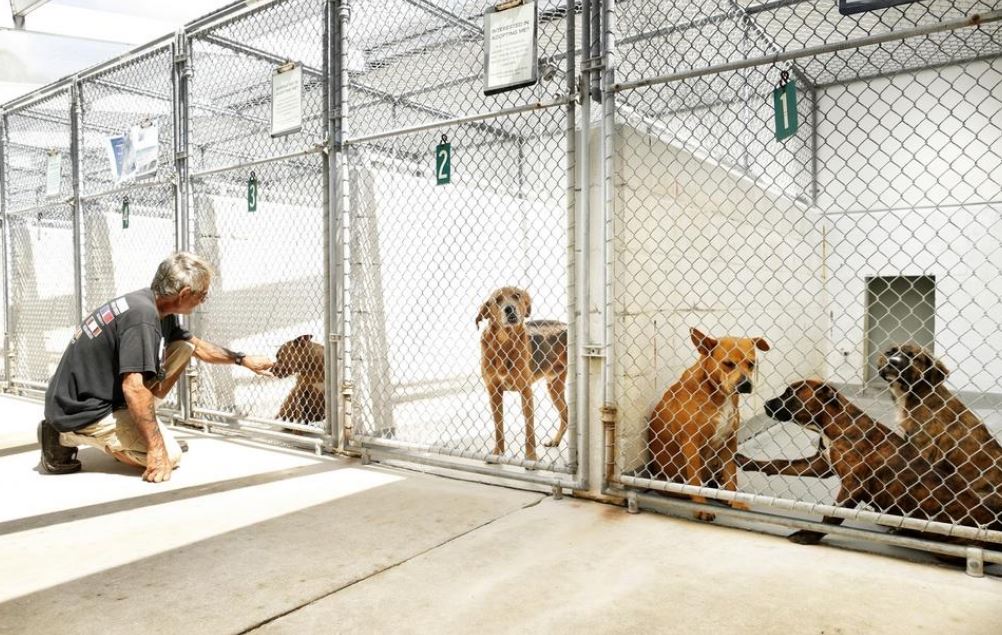Module 7: Get to Know a Shelter
Community Animal Shelters
Sheltering agencies run the gamut in size from those that are very large, handling tens of thousands of animals per year, to those that are very small, including grass-roots groups and private individuals. Similarly, sheltering facilities vary tremendously in their physical structure, ranging from those with modern buildings equipped with state of the art animal care facilities, to small, dilapidated sheds lacking adequate climate control and plumbing. Others operate without facilities by utilizing networks of foster homes. Most communities today have at least one local animal shelter, if not several shelters of varying types.

Government versus Nonprofit Shelters
The terms “government” and “nonprofit” refer more to how shelters are funded and governed, rather than how they are operated. Government shelters are primarily funded by taxpayers and operated by a governmental staffing hierarchy that ultimately answers to elected officials. These elected officials also approve municipal animal control ordinances and budgets. Government shelters are responsible for enforcing local municipal animal control ordinances, such as this one for Alachua County, Florida.
Nonprofit shelters are funded primarily by grants and donations and operated by a staff supervised by an executive director who answers to a volunteer board of directors. Nonprofits must be incorporated and exempted by the IRS as 501c3 organizations in order for donations to be tax-deductible.
Most Government animal control facilities were originally established with public safety in mind – to protect the public from animals. Animal control functions, such as impounding free-roaming animals, quarantining biting animals, distributing licenses, responding to nuisance complaints, responding to injured and abused animals, and enforcing local laws, are typical municipal functions to protect the public from animals.
In contrast, most nonprofit shelters were originally established with animal welfare as their primary function – to protect animals from the public. Historically, life-saving programs such as adoptions, emergency care, spay-neuter programs, cruelty investigations, and subsidized veterinary care were developed by non-profit organizations.
Today, increasing public demand for humane communities has prompted all types of shelters to extend their spectrum of services and collaboration. For example, animal control functions may be performed in a shelter operated by the municipality itself, or the municipality may assign these services to a private non-profit shelter with a government contract. Increasingly, shelters, rescue groups, and veterinary clinics are working proactively together to share information, transfer animals into the most appropriate program, and develop safety net programs to reduce the need for animals to enter the shelter system altogether.

Open Admission versus Limited Admission Shelters
Regardless of the governance structure and funding source of shelters, there are also differences in their intake policies.
Open admission shelters accept all animals within a jurisdiction. This policy may be mandated by local ordinance, required by contract, or determined by the shelter’s internal policies.
Limited admission shelters select the number and types of animals taken in. Both shelters and foster-based rescue groups may match intake numbers with available space, select certain types or breeds of animals, or specialize in particular medical and behavioral treatment cases.
Managed admission can be used by both open admission and limited admission shelters to maximize positive outcomes for each animal. This policy matches the flow of intake with the capacity of the shelter to house and care for the animals and to provide an opportunity for shelter staff to speak with members of the public and offer alternatives to giving up their pet. Scheduled appointments and pre-intake counseling may be used to balance community needs with shelter resources in a way that doesn’t say, “no,” but says, “not now.”
Intake policies may play a role in how much euthanasia is used as a population management tool in some organizations. However, admission policies are not necessarily correlated with life-saving capacity, and there are many examples of high-intake open-admission shelters that achieve remarkable save rates.
Read how a large open-admission government shelter in Florida is saving more than 90% of the animals taken in.
Brevard County Animal Services

By Tim Shortt
Brevard County Sheriff Wayne Ivey announced Friday that Brevard County Animal Services has officially received the status of a “No Kill Community.”
To earn the status, Ivey said, locales have to have a live release rate at above 90 percent for more than a year.
Ivey noted the progress since the Brevard County Sheriff’s Office assumed command of the shelter on Oct. 1, 2014.
“If you remember, 55 percent is where we started, and, today, our live release rate for the past 12 months is at 94.86 percent, which is just an amazing accomplishment by an amazing team,” Ivey said. “Our live release rate has gone as high in some months as 96 percent. I think, for the month of September, as a matter of fact, we’re at 95 percent.” Read more . . .

